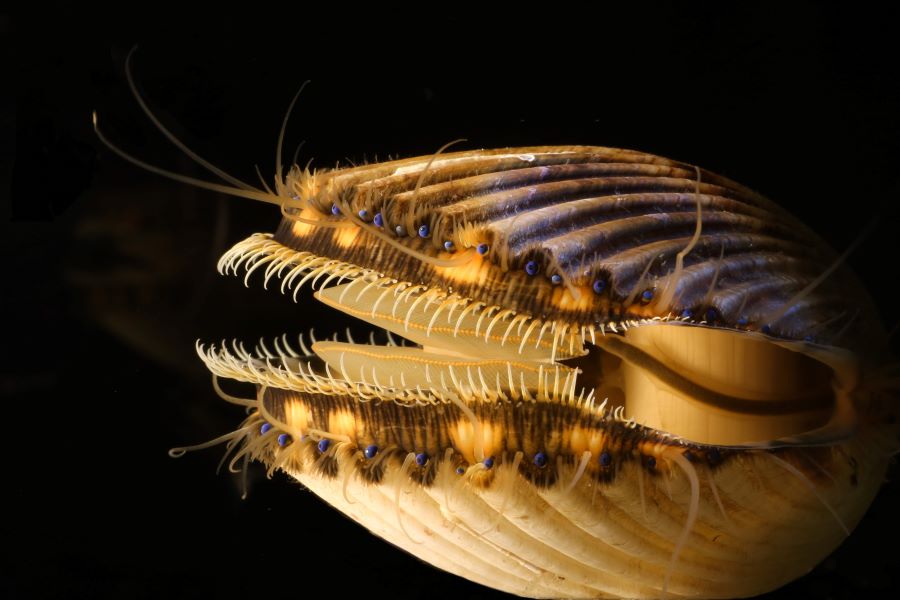FSU’s ‘Art in STEM’ celebrates 10 years of highlighting the beauty in science

Florida State University’s annual “Art in STEM” exhibition is back April 24 for a 10th year, spotlighting unique visual artistry created by researchers in science, technology, engineering and math (STEM) disciplines.
This event is hosted each year by FSU’s Graduate Women in STEM (GWIS), in collaboration with the College of Arts and Sciences and FSU Libraries. The physical installation of the exhibit is on display in the Dirac Science Library in addition to an online exhibition.
“In honor of the 10th anniversary, we have featured submissions from faculty, staff and FSU alumni as well as undergraduate students, graduate students and postdoctoral scholars in this year’s exhibit — showcasing everyone at different stages in their educational and professional careers,” said Grace Westphal, 2024 GWIS president and a master’s student in biological science. “We hope to honor the contributions that FSU community members have made and continue to make to the ongoing research efforts of our university.”
This year’s more than 40 artworks depict topics including shellfish restoration aquaculture, coastal wetland ecology, parasitology, the impacts of anthropogenic pollution, math modeling of disease systems, virtual reality technology and more. Artists featured in the exhibition represent FSU’s Departments of Biological Science; Chemistry and Biochemistry; Art Education; Earth, Ocean, and Atmospheric Science; and Molecular Biophysics; and the FAMU-FSU College of Engineering.
Morgan Hawkins, an ecology and evolutionary biology doctoral student who conducts research at the FSU Coastal and Marine Laboratory, is among the students with artwork featured in this year’s exhibition. Her submission, “The Florida Bay Scallop,” is a macrophoto of the stunning, alien-like bay scallop that inhabits Florida’s shallow seagrass meadows.
“It’s an honor to spotlight the fascinating world of bay scallops, which are uniquely equipped with over 40 eyes, dozens of sensory tentacles and the capability to swim, in this year’s ‘Art in STEM’ exhibition,” Hawkins said. “This opportunity allows me to advocate for the ecological and economic importance of bay scallops in Florida as well as inspire others to join me in exploring and understanding bay scallop restoration to ensure this unique bivalve persists for generations.”
Florida is one of the only states where recreational fishermen can snorkel in seagrass meadows and collect bay scallops, and as this sport becomes more popular, there is a growing need for restoration efforts in scallop source populations. Hawkins’ submission to the “Art in STEM” exhibit features a wild adult bay scallop that was collected from local shores and bred in the FSU Coastal and Marine Lab’s Shellfish Restoration and Research facility. This process is an essential aspect of Hawkins’ research on morphological and behavioral differences between cultured and wild bay scallops used in restoration aquaculture.
“Incorporating art into scientific endeavors fosters captivating visuals that ignite curiosity in research, including my photo and many other exciting pieces in this year’s exhibition,” Hawkins said. “Striking illustrations or paintings depicting our work can captivate even those unfamiliar with research, compelling them to delve deeper, serving as a catalyst for meaningful conversations about research and enhancing public understanding of experimental designs and scientific exploration.”
Since its inception in 2015, “Art in STEM” has continued to flourish in popularity and participant numbers, with this year’s exhibit featuring the largest number of works ever.
“This event provides a platform that showcases the beauty behind STEM research and provides scholars the opportunity to highlight why their work is the coolest thing in the world,” Westphal said. “By displaying art pieces in the Dirac Science Library, undergraduate students studying there are exposed to the diversity of research taking place at FSU, and it lowers some barriers that may keep undergraduate students from pursuing research in the first place, such as the intimidation some might experience when introduced to complex scientific topics.”
Members of the FSU community are invited to join in the tradition of voting for their favorite artwork for the “Art in STEM” People’s Choice Award, which this year features support from FSU Votes and Leon County Supervisor of Elections. On-site voting is open 9 a.m. to 4 p.m. Wednesday, April 24. The winner will be announced the following day and receive a trophy and certificate, among other small prizes. Viewers exploring the digital exhibition can vote online.
For more information or to view the 2024 “Art in STEM” Exhibition, visit artinstem.create.fsu.edu/.

